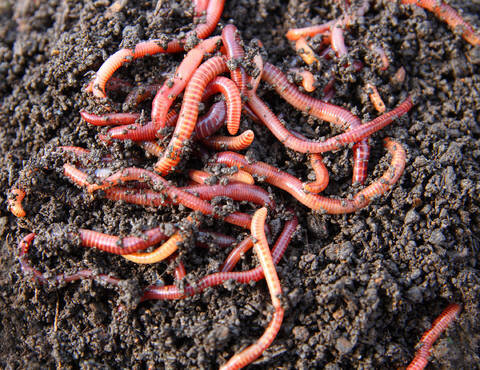Composting-friendly red wigglers: Boost soil nutrients
Red Wigglers: The Secret to Eco-Friendly Composting
Red wigglers, medically recognized as Eisenia fetida, play a pivotal duty in lasting composting practices, providing a natural service to throw away monitoring. red wigglers. These worms not only consume natural materials but likewise change them into important vermicompost, enhancing soil wellness and advertising eco-friendly equilibrium.
What Are Red Wigglers?
Although numerous people know with earthworms, red wigglers (Eisenia fetida) are a certain types that play a critical duty in composting. Indigenous to Europe, they have adapted well to a selection of environments, especially in decaying raw material. Unlike common yard worms, red wigglers grow in rich, moist atmospheres, making them suitable for composting systems.
(red wiggler worms)These worms are characterized by their reddish-brown pigmentation and lengthened bodies, commonly gauging between 3 to 4 inches in size. Red wigglers are epigeic worms, implying they reside near the dirt surface and feed on decomposing natural product. Their high reproductive price permits populations to proliferate under optimal problems, with the ability to double in number every few months.
Red wigglers possess a distinct gastrointestinal system that enables them to damage down natural waste successfully. As they eat food scraps, they create nutrient-rich castings, which work as an excellent fertilizer for plants. This types is not just efficient in converting waste yet likewise adds to soil wellness, promoting microbial activity and boosting soil structure. Their lasting nature makes red wigglers a valuable property in green composting techniques.
Advantages of Using Red Wigglers
Using red wigglers in composting systems uses many advantages that enhance both the efficiency of waste disintegration and the quality of the resulting garden compost. These earthworms, scientifically understood as Eisenia fetida, are renowned for their extraordinary ability to take in organic waste, converting it right into nutrient-rich vermicompost at a remarkable rate. Their quick digestion procedure speeds up the breakdown of kitchen area scraps and backyard waste, considerably decreasing the time needed for composting.
In addition to their effectiveness, red wigglers add to improved soil framework and fertility. The vermicast produced by red wigglers is rich in important nutrients, advantageous microbes, and humic acids, every one of which enhance soil health and wellness and advertise plant growth. This nutrient-dense garden compost assists maintain wetness and boosts aeration in the dirt, cultivating a thriving community for plants.
Moreover, utilizing red wigglers for composting decreases land fill waste, adding to a more lasting waste monitoring system. By diverting organic materials from garbage dumps, composting with red wigglers reduces greenhouse gas emissions, making it an environment-friendly selection for environmentally mindful people and areas. Overall, red wigglers offer a reliable and lasting option for composting.
Setting Up Your Worm Bin
Creating a worm bin is a simple procedure that calls for cautious factor to consider of materials and problems to make sure a growing setting for red wigglers. Begin by picking an appropriate container, which can be a plastic container or wood box, with a capability of at least 10 gallons for effective composting. Guarantee the bin has sufficient ventilation by drilling tiny openings in the lid and sides to permit air flow.
Next, prepare the bedding, which is crucial for keeping moisture and giving a habitat for the worms. Suitable products include shredded newspaper, cardboard, coconut coir, or peat moss. Go for a bedding deepness of about 4-6 inches, ensuring it perspires yet not extremely wet.
It is essential to preserve the best temperature for your worm container, preferably between 55 ° F and 77 ° F(13 ° C and 25 ° C) Position the bin in a shaded location to stop getting too hot. Furthermore, keep the container far from direct sunlight and severe weather conditions to protect the worms.
Feeding Your Red Wigglers
Feeding your red wigglers is an important facet of effective worm composting, as it directly influences their wellness and the efficiency of your composting system - red wigglers. Red wigglers grow on a healthy diet being composed primarily of natural waste products.
(buy red wiggler worms)Beginning with tiny amounts to enable the worms to take in the my company material totally prior to adding much more. Monitor the food decomposition procedure and readjust the amount based on exactly how rapidly the worms are processing the waste.

Maintaining Your Worm Compost System
A properly maintained worm compost system is crucial for optimizing the efficiency and durability of your composting initiatives. Routine surveillance of moisture degrees is critical, as red wigglers prosper in a wet atmosphere, preferably around 70% moisture. If the bed linens becomes as well completely dry, lightly mist it with water; alternatively, if it becomes overly damp, include completely dry bedding such as shredded newspaper or cardboard to take in excess dampness.
Temperature level control is additionally vital. Ensure your compost system is kept in a shaded, aerated area to protect against overheating.
Check the worm populace and their activity; a thriving population suggests a well-balanced environment. By following these upkeep techniques, you can make sure an efficient and lasting worm composting system that effectively reuses natural waste.

Conclusion
In verdict, red wigglers play an important role in environment-friendly composting by successfully converting organic waste right into useful vermicompost. Embracing the use of red wigglers stands for a useful strategy to enhancing environmental sustainability and fostering much healthier environments.